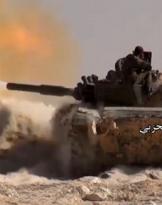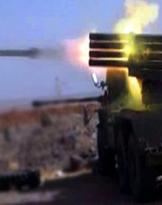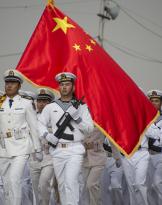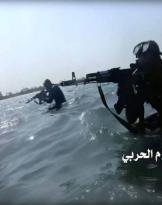The December 29 attack in Mardan would suggest a truth already known: the Khyber Pakhtunkhwa (provinces of the North West) and the Tribal Areas on the border with Afghanistan are out of Islamabad's control.
Let's go into detail.
There were two claims of the attack: the first of Jamat Ul Ahrar secessionist group from the most famous Pakistani Taliban (Tehreek-Taliban), the second of the same TTP. The split between the two groups, reunited in the summer 2015, was due to an approach of the former to the operational modalities of ISIS. Let us remember that ISIS and Taliban despite struggling to find differences, come from the same Sunni Wahhabi matrix, exported from Saudi Arabia.
The connecting bridge between the two systems, both capable of governing on territorial state forms (the Taliban over Afghanistan, ISIS over an invented one between Iraq and Syria) is Al Qaeda: Al Qaeda (Bin Laden) would be born from the Afghan Taliban and from the Qaedist emptying in Syria (Al Nusra) the strength of the Caliphate would have been generated.
In other words, the differences would be reduced to the internal rivalries of the leadership and the operating methods. On these same, however, there is a general convergence between the operations of the so-called Islamic State outside its territory and the past exploits of Al Qaeda. The Paris attacks prove this.
There is therefore a tendency to mistake the differences rather than the ideological link that unites three realities, although very different over time: the Taliban, ISIS and Al Qaeda. Considering that all three have generated a franchise of terror, it would perhaps be good to look at the Sunni jihadist belt regardless of the various international acronyms.
It is here that Pakistan's role returns. In April 2015 there was in Jalalabad the first attack claimed by ISIS in Afghan territory. Jalalabad is 70 km from the Pakistani border and precisely from the Tribal Areas straddling the two countries.
 Is it a coincidence that the presence of ISIS in Afghanistan starts from the border with Pakistan? The undisputed territory of the Tehreek-Taliban is Waziristan (one of the Pakistani border areas) where the leader Mehsud was killed in the 2013.
Is it a coincidence that the presence of ISIS in Afghanistan starts from the border with Pakistan? The undisputed territory of the Tehreek-Taliban is Waziristan (one of the Pakistani border areas) where the leader Mehsud was killed in the 2013.
The rivalries on Afghan soil between ISIS and Taliban's new acolytes are known, but in the odor of resumption of large-scale hostilities in the spring of 2016, a possible axis among Sunni Wahhabi Islamists cannot be underestimated. It should not be forgotten that the head of Al Qaeda (born in Afghanistan) was Saudi, like most of the volunteer militiamen enrolled in the ISIS and above all of the private funds that passing through Kuwait arrive in the pockets of the Caliphate.
So what is Pakistan's position?
It is known that Hamid Gul, the old head of the ISI (the Islamabad services), who died in August 2015, after having managed the Operation Cyclone (v.articolo) with the CIA in the years of the Soviet invasion of Afghanistan, it did not hide its open sympathies in the 90 years for Al Qaeda. The fact is emblematic of the double (and triple) step taken by Pakistani intelligence in the last thirty years and of the ambiguous relationships intertwined with the CIA itself.
The ISI, according to some accredited sources of 10.000 operating agents, is the contact bridge with all Islamist groups active on the Indian subcontinent, including paramilitary groups operating in Kashmir. In the Pashtun area between Afghanistan and Pakistan, no leaf moves that ISI does not want ...
If the patronage of anti-Indian extremism in Kashmir (and in Afghanistan) can be read in a "patriotic key", it is much more difficult to understand the nature of the relations that the ISI has with anti-Western fundamentalism. Relations with the Taliban in Afghanistan fall under the jurisdiction of the JIN, the all-powerful operating branch of the ISI. The communication line was never interrupted even during the operation Black Thunderstorm of the 2009 and the Operation Zarb-e-Azb 2014 with which the Pakistani army would have sought to regain control of the North West provinces (in particular the districts of Swat and Shangla).
 The US pressures committed to the bombing campaign to give "strong signals" have done nothing but increase the opinion of the Pakistani General Staff, very busy moving troops without ever getting anything definitive. The hundreds of militiamen killed by the Pakistani army in the two different offensives, are to be considered the victims to be fed to world public opinion.
The US pressures committed to the bombing campaign to give "strong signals" have done nothing but increase the opinion of the Pakistani General Staff, very busy moving troops without ever getting anything definitive. The hundreds of militiamen killed by the Pakistani army in the two different offensives, are to be considered the victims to be fed to world public opinion.
The goal of Islamabad is therefore increasingly that of delegating the future control of Afghanistan to the tolerated (fortified) Pashtun militias once the mission is over. Resolute Support. How much of Caliphate or former Al Qaeda there is to be seen. How the US is forced to swallow, too. The USA, Pakistan, Saudi Arabia triptych is back, a forced but very strong relationship. In this regard, Islamabad took the distance from the Saudi call to arms against international terrorism (v.articolo), appear little more than a media staging.
The attacks in Mardan, in Peshawar all over western Pakistan, are part of this hazy scheme, but of which the CIA itself appears to be increasingly a prisoner. Without Pakistan, contact with the groups operating in the area is impossible, as is a solution by the Afghan hornet's nest. However, without ISI, control of Pakistan appears impossible.
(see also: Tent Pakistan. Cap.1: The war between the peaks of Kashmir)












